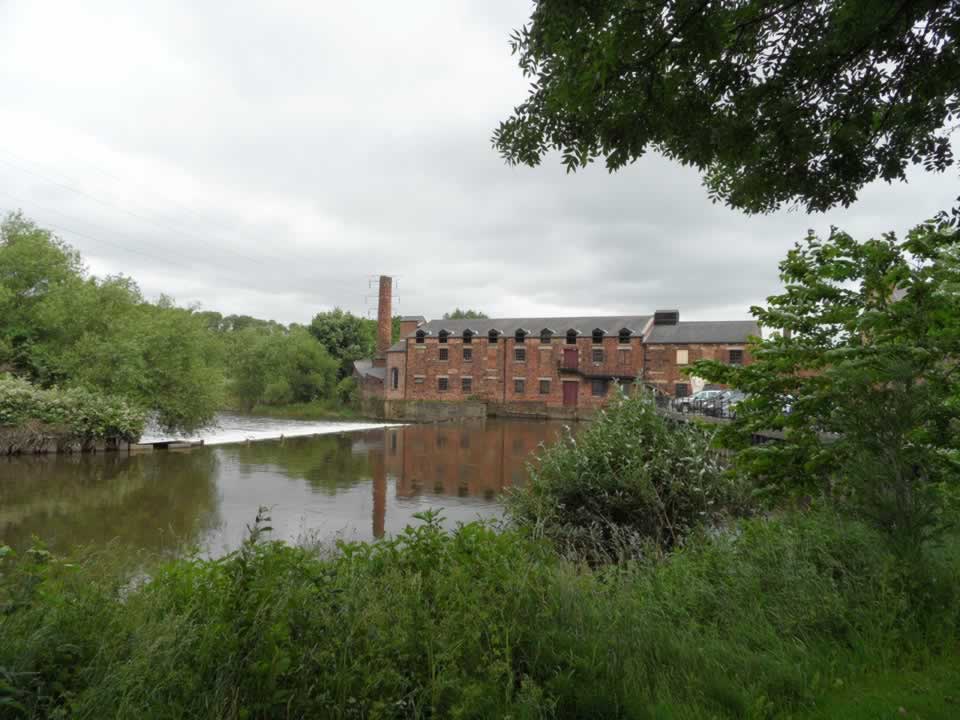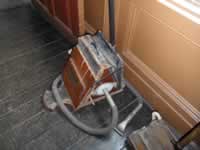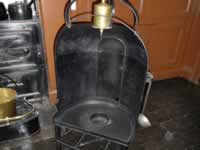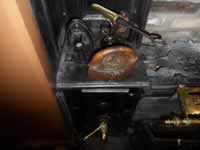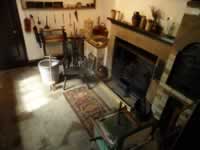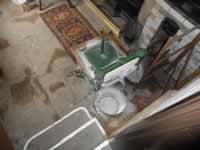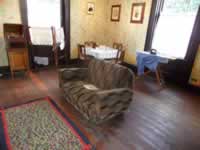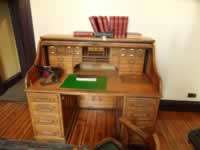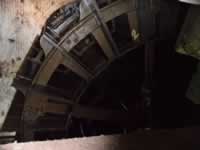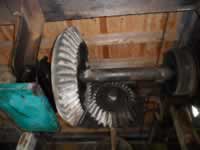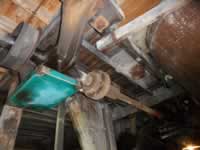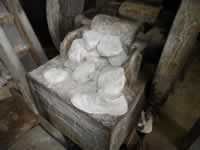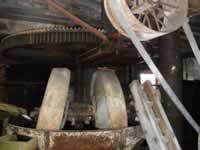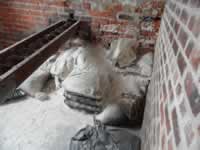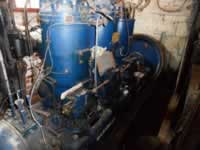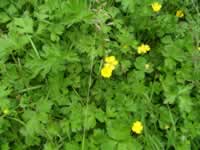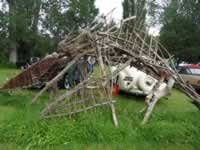Video of Thwaite Mills Water Wheel & Mill Machinery
Thwaite Mill Description
- Thwaite Mills is one of the few working waterwheel mills left in the country.
LocationThwaite Mill Location
The Mill is located on the North western end of a long island with the River Aire on one side & the Aire Calder Navigation Canal on the other.
Access is by a narrow road bridge at the end of the 800 metre long, Thwaite Lane from the junction of Wakefield Road A639, Thwaite Gate A639 and Pontefract Road B6481.
Access is also available by walking along the pleasant Canal footpath from 'The Armouries Museum' in central Leeds. Distance around 2 miles. A brisk walk takes about 30 minutes.
Address: Thwaite Mills Water mill Museum, Thwaite Lane, Stourton, Leeds. LS10 1RP
Thwaite Mills Water Wheel& Mill Machinery Video
Video Editing Software
Opening Hours
Opening Times Open Saturday - Sunday (1pm to 5pm) - Open Leeds (LEA) School Holidays
Tuesday to Friday (10am to 5pm) Last admission 3:30pm. Last tours 3.15pm.
Open Bank Holidays.
Buses to Thwaite Mill
The best bus service for Thwaite Mill is the 110 Leeds Wakefield Bus which is every 10-minutes at peak times. This bus departs from Leeds Bus Station stand A4 A5.
Nearest Bus Stop: Wakefield Road / Pontefract Road.
Walking Distance from Bus Stop 850 metres
Walk back along along Wakefield Road towards Leeds 76 metres to the junction of : Wakefield Road / Pontefract Road / Thwaite Lane
Walk Along Thwaite Lane, cross over the Canal Bridge & continue to Thwaite Mill
Entrance to the Mill & Mill Shop
Entrance to the mill is via the Mill Shop which sells gifts, toys
Thwaite House - The Mill managers home & office.
Thwaite House is is a Grade 2 listed building and a great Georgian hone built in 1823. It is located immediately after the entrance Shop and 40 metres before the first entrance into the mill.
Only the ground floor is open to the public and it is a museum and lade out as a typical home during the early 20 th-century including the war II
There are 5 rooms on the ground floor.
- The kitchen. At this period was often the main living room in many homes in this period of time, especially in winter before central heating.
- The washing room, a smaller room off the kitchen. Can only be viewed from the doorway.
- The Sitting room, in this period often only used on Sundays or when visitors were expected.
- The Managers Office
- A room for your kids to play in.
A Few of The notable Exibits
Baby Daisy Vacuum Cleaner
An early Vacuum Cleaner from around 1907, made in Britain to a French design.
The cleaner was hand powered and required 2 people to operate. One would operate the broomstick sized handle that opened & closed the bellows creating a suction. The other person operated the nozzle
Early electric vacuum cleaners were also available at this time but electricity was not readily available and people were frightened of electrocution, therefore they were not yet popular.
Yorkshire Range
The cast iron Yorkshire Range was the backbone of the kitchen. It was the only cooking source, having an oven for bread & cake making & Meat roasting. Stands that held pans over the fire and a boiler to supply hot water.
A polish called Black Leading was applied to the range to make them shine & look good.
In winter the iron shelves of the oven were wrapped up and placed in the bed as bed warmers.
Meat Roasting Spit
The brass housing at the top held a wind up clockwork motor that slowly rotated the joint of meat hanging from it.
Meat juices and fat dripping from the meat ran into a collection pit in the bottom. this could be scooped out with the ladle and placed in jars to cool into dripping & jelly which was used as a spread on bread or used as an ingredient in recipes of the fat used for frying.
During World War II food was rationed therefore nothing was wasted.
Flat Irons
Flat irons are used for ironing washing. They are made from cast iron and have a thick base to store the heat for as long as possible. Most house holds would have more that 1 flat iron so that while one is being used the others would be getting hot placed on a plate directly over the fire. or on the flames of a gas cooking stove.
The large brass flat iron at the front is hollow with a hinged top. Hot glowing coals from the fire would be placed inside. Electric irons were available where households had electricity.
The long poker looking object is a hair curling tool.
Washing Room
To one side of the kitchen is a doorway and a few steps down leading to a washing room. Just to the right of the door is a manual operated washing machine. the first electric one came out in 1908.
At the far side of the room is an older method a washing tub, to the left of the chair, where the washing was manually agitated in a washing tub with either a:
- Washing dolly a long handle with a cross handle at the top & 3 or 4 prongs on the bottom. Used in a twisting motion usually on sturdy items..
- A posser, similar to the dolly but with a semi sphere at the bottom used in a plunging up & down motion, used usually on light weight washing, such as cotton sheets & shirts..
A Washboard, to the right of the chair, was a frame with a corrugated iron centre against which the washing was rubbed. Later in the 50's became an instrument in Skiffle Bands.
In the far right corner is an open top copper boiler in which clothes were boiled. a fire was lit under the boiler, you can just see the fire door behind the washboard
Leaning against the back wall is a wringer. On it's left side is a crank wheel that revolved the 2 large wooden rollers through which wet clothes where passed squeezing out the water. The gap between the rollers could be adjusted by the 2 large wing nut on the top and gap tension was retained by strong springs hidden by the frame
Washing Machine
A manually operated washing machine Through the lid is a spindle with a dolly inside that agitates the washing, a turning handle outside operates the dolly. On top on one side of the machine is a wringer to squeeze out the water.
Before modern detergents a product called Dolly blue was dipped into the rinse water. The blue in the water dyed the washing very slightly and masked the yellowing of white goods.
Sitting Room
Some of the notable features of the this Sitting room are:
- The large rug made from rag clippings
- Clockwork wind up Gramophone for playing 78 RPM records.
- Wooden Clothes Horse over which clothes were dried.
- Flat iron on the ironing board.
- Lace table cloth
- Tea cosy over the tea pot
Rag Carpet before completion
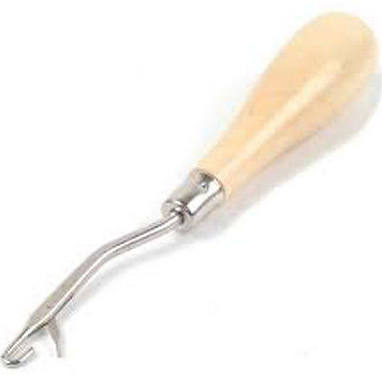
Another partially raised rag rug is hanging up and the canvas backing can bee seen. Rag clippings were looped through the canvas using a special latch hooked piece of metal similar to those used for crochet.
Mill Managers Office
The Mills Managers Office had a roll top desk. Various business, account & information books are located on the desk and on shelves in the room.
Thwaite Mills Blacksmith Workshop
The Working Mill
Mill Weir
The weir is basically a dam across the river and deepens it providing a head of water to power the waterwheels. Excess water flows over the top of the weir
Hinged Wooden boards called deals placed on top of the weir could be raised to increase the head of water. These are lowered when the river is in flood.
At the end of the weir is a gate that can be opened to bypass the weir & the mill and lower the water behind the weir. This allows repairs to be conducted on either the weir or the deals.
Waterwheel
Thwaite mills has 2 undershot waterwheels with diameters of 18 feet (5.6m) and widths of 14.5 feet (4.26m) & 8.75 feet (2.67m) wide, to power the various machinery. Later they purchased a diesel engine. The waterwheels have a maximum turning rate of 12 rpm.
An undershot wheel is where the flow of water runs under the wheel. This method is not as efficient as the overshot wheel where water is introduced to the top of the wheel where the weight of water in the wheels paddles adds to the force of the flow.
The wheels rotation speed could be controlled by the amount of water flowing through the 'Sluice gates' which could be closed to stop the wheel. The water then flows back to the river via the tail race which flows between the Workshop & Drying Sheds.
The waterwheels each rotate a horizontal shaft that provides power to all the machinery via shafts, cogs, gears, belts & pulleys
Right Angle Cogs
This pair of right angle cogs change the direction between vertical and horizontal rotation. In addition the handle wheel on the right side of the right cog moves to cogs so that it can be disengaged to stop the attached machinery.
Because the cogs are of different diameters the shafts will rotate at different speeds
Belt & Pulleys
Belt & Pulleys are used to transfer power from the shafts to other shafts connected to some of the machinery. With a half twist in the belt they could transfer power between horizontal & vertical rotation.
High Level Horizontal Shaft
Being located just under the ceiling leaves the floor clear for the passage of workers and/or for machinery
A drip tray is located underneath the bearings to catch excess grease
Chalk Rock
Rock Chalk on top of a roller crushing machine where it's crushed to small pebble size pieces before transported further into the mill
The mill could also crush Flint rock if required.
Edge Running Mill
The Edge Running Mill is where the chalk is ground to powder. in the presence of water which mixes with the powdered chalk to form a slurry which overflows into a series of settling pits. Giant paddles slowly stir that water keeping the finer chalk to remain in suspension in the water and overflowing to the next pit. The larger particles of chalk quickly settle to the bottom where this 'lumpy' slurry is pumped back to the Edge Running Mill for additional grinding.
Chalk from the final pit is recovered & transported to the drying rooms in a separate building to be dryed to a chalk powder.
The chalk powder was then sold, or was mixed with linseed oil to form putty used to fix in glass windows and then sold.
Horizontal Auger
The Horizontal Auger works on the Horizontal Archimedes screw principle & is a method of transporting rock chippings between machinery. Normally this is done in an enclosed tube but the top half of the tube has been removed to allow visitors to see the screw.
Rock Chippings Elevator
Here the rock chippings are being elevated to the Edge Running Mill via an elevator comprising of a moving sloping belt, set in a channel. Wooden blocks attached to the belt, prevent the chippings from slipping back down the elevator.
Powdered Chalk
Whiting ie powdered chalk in sacks & also spilt upon the floor. Whiting
was either sold as a product or it went for further processing to make putty on the first floor.
Marshall-Engine
The diesel Marshall Engine built in 1928 was purchased in 1932 to provide power to a Raymond crushing mill purchased shortly before, and it was found that the waterwheels were not powerful enough to run all the other machinery and the Raymond Mill
Woodland Walk
The woods, grounds and island are a haven for wildlife. Visitors should walk around slowly and quietly and look out for kingfishers, herons, foxes, rabbits, woodpeckers, waterfowl and many more creatures



